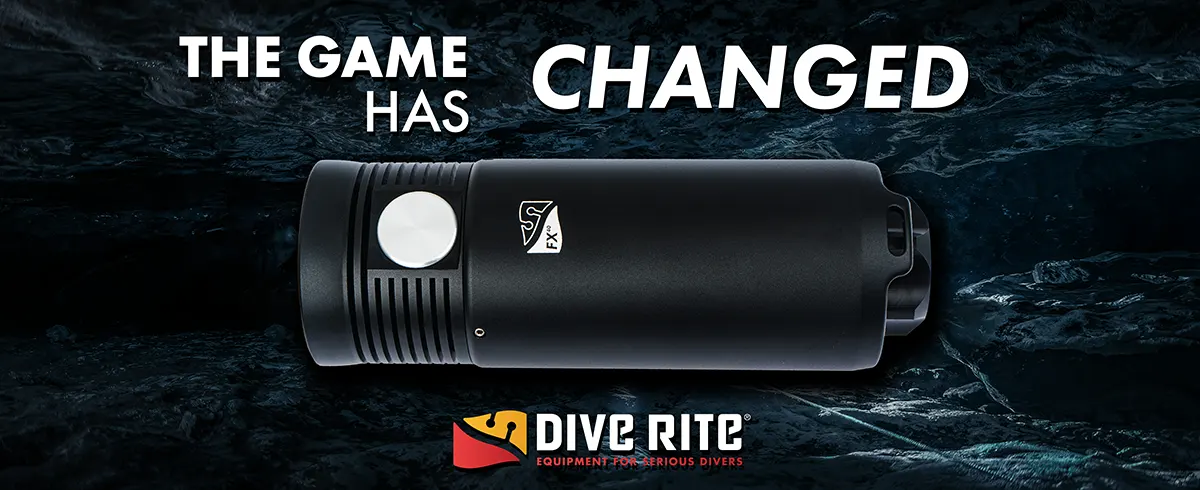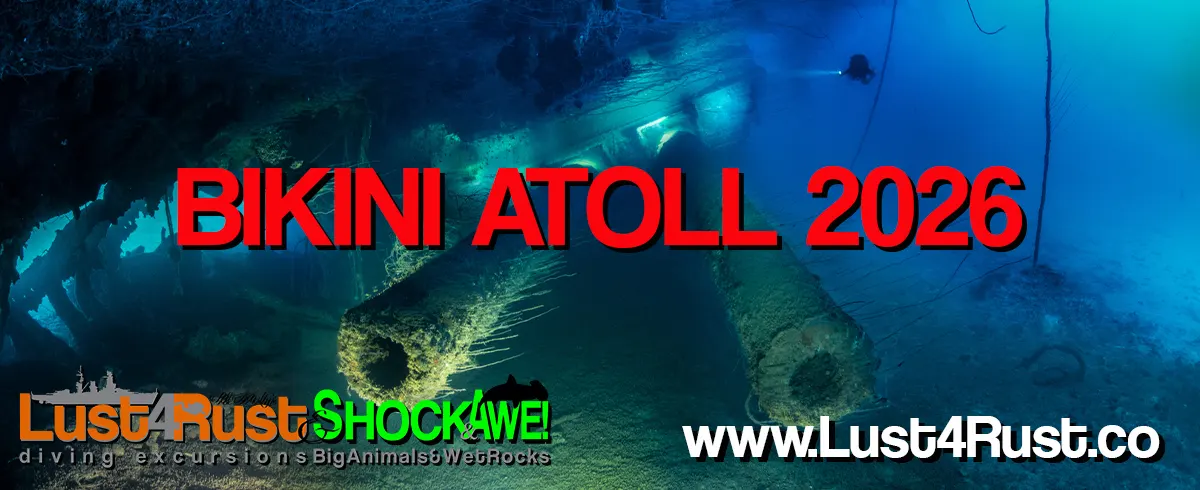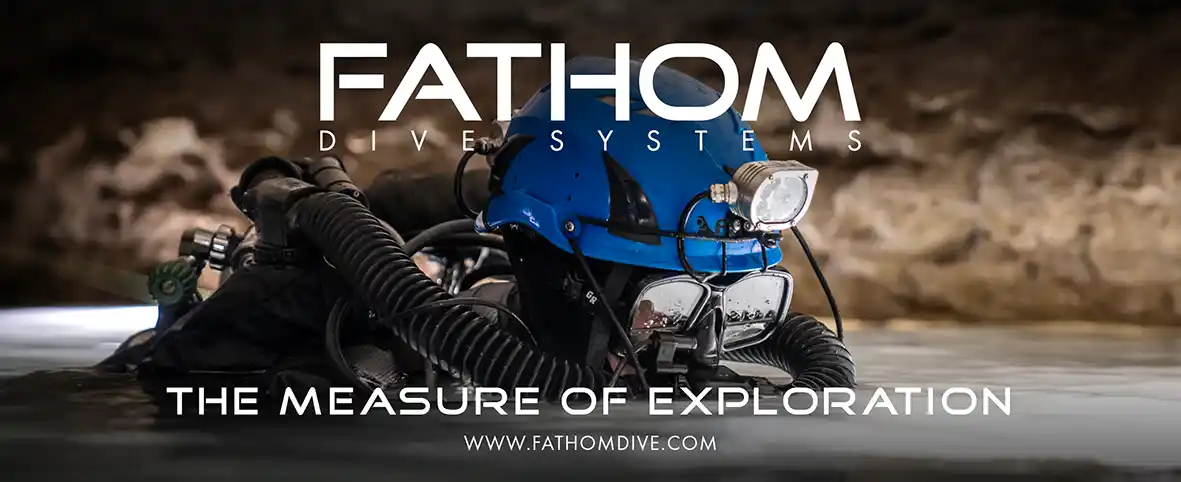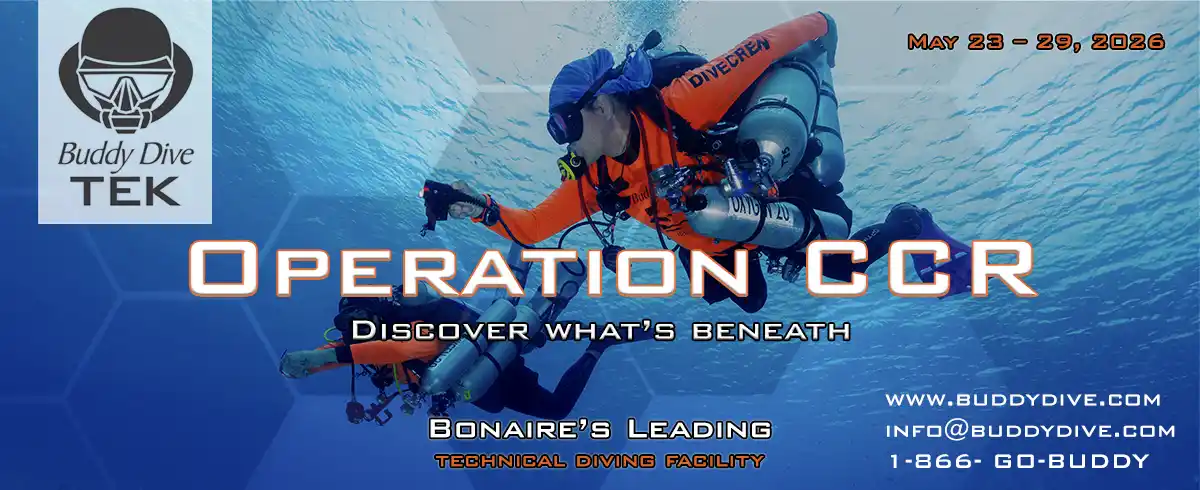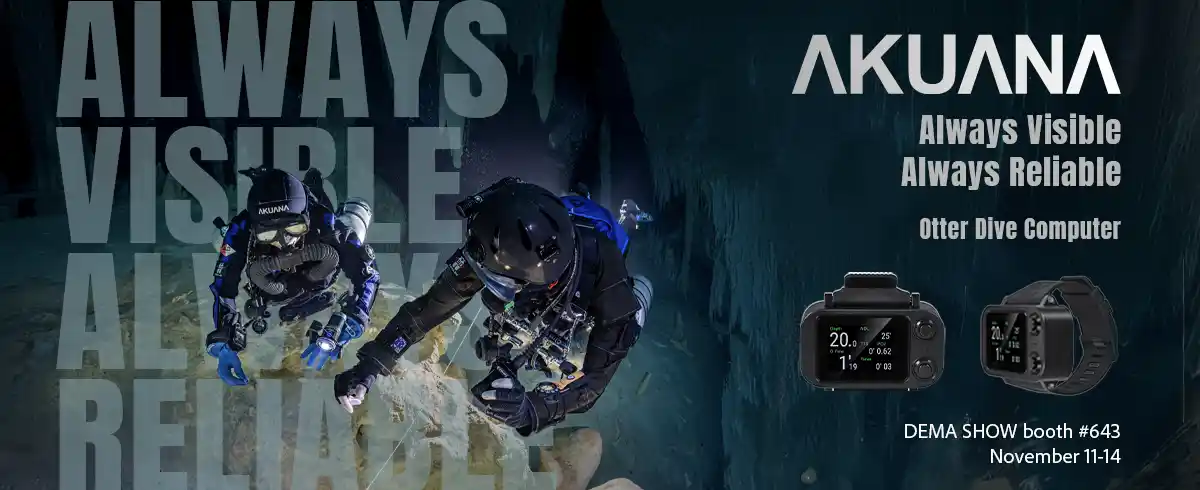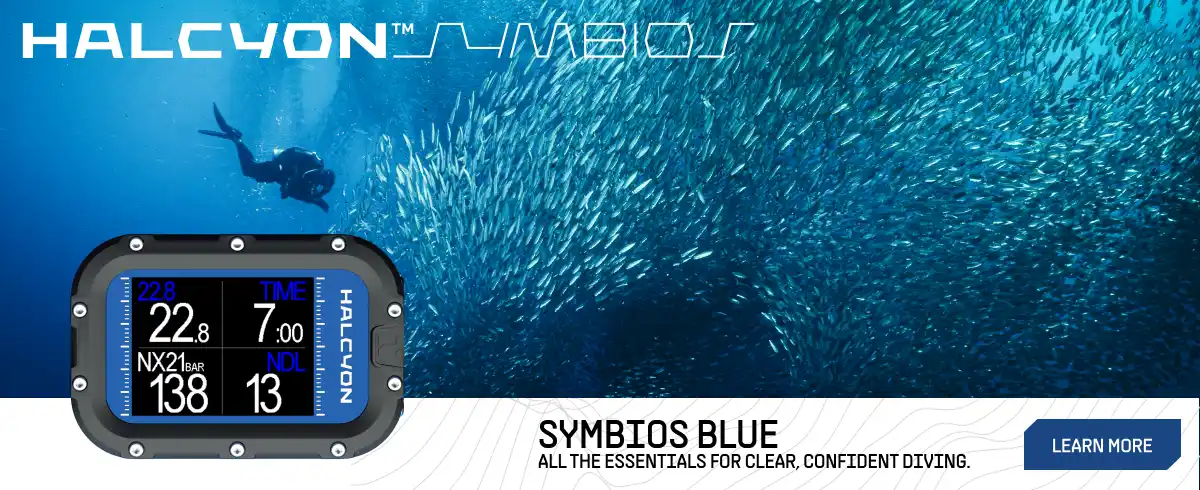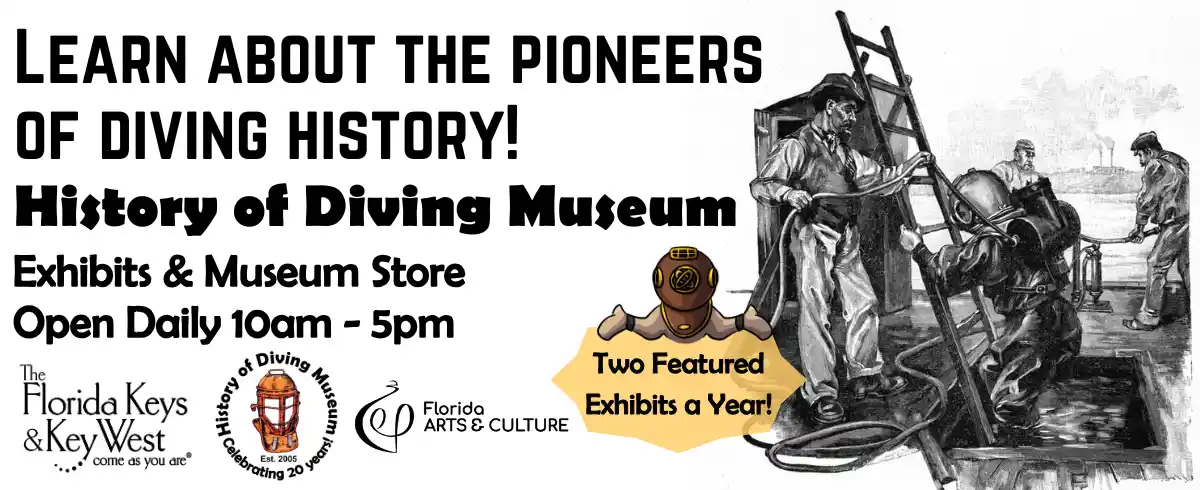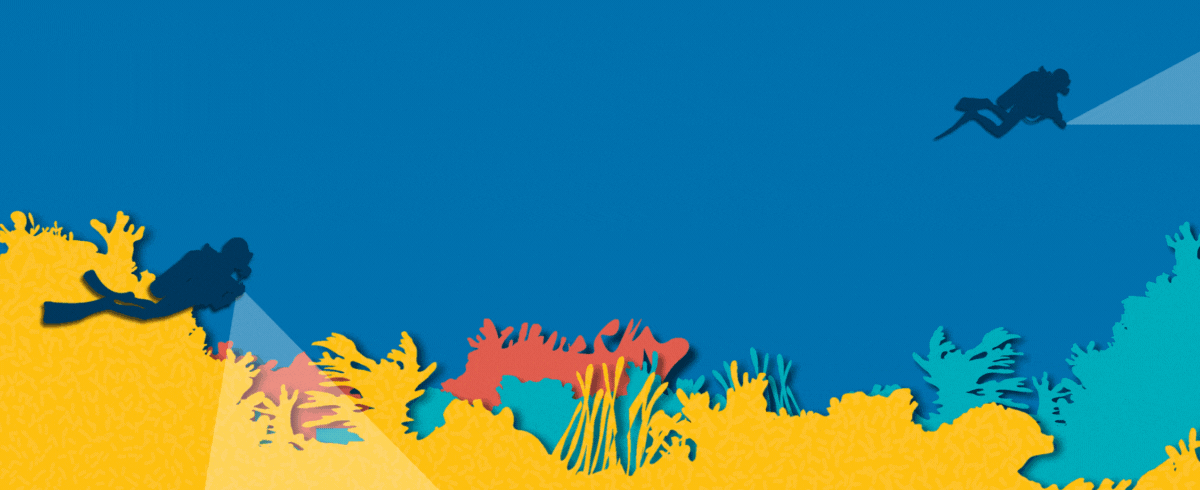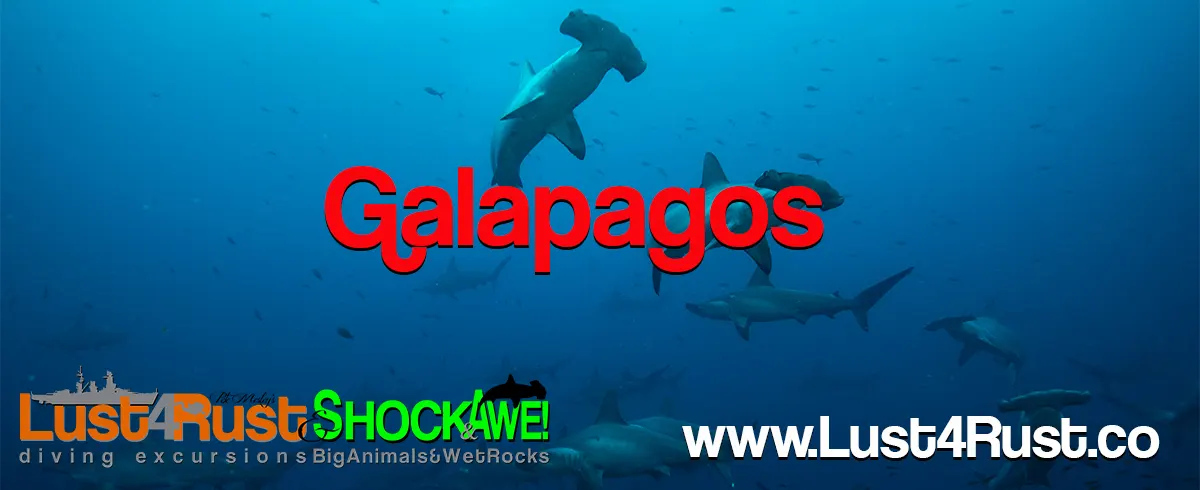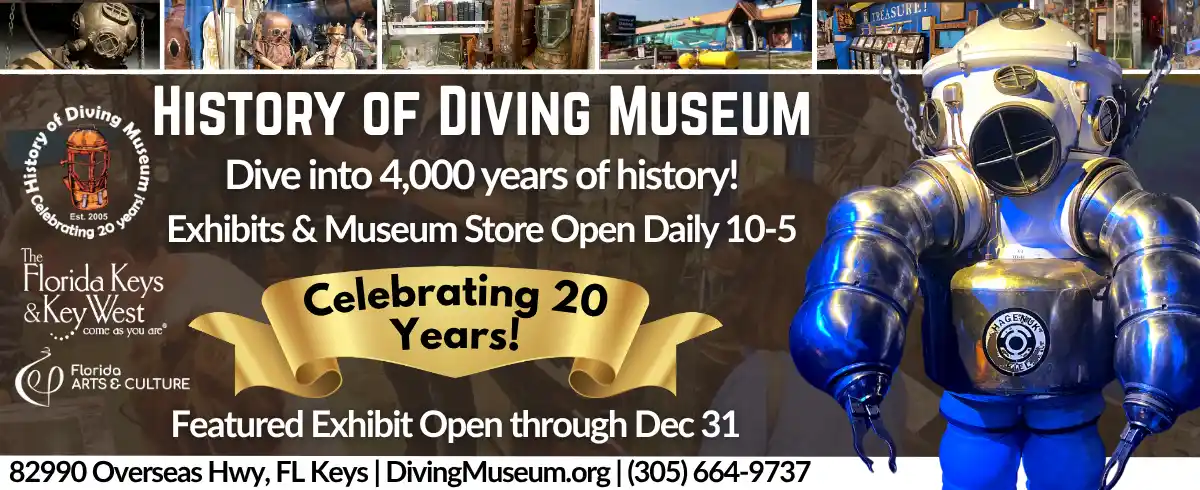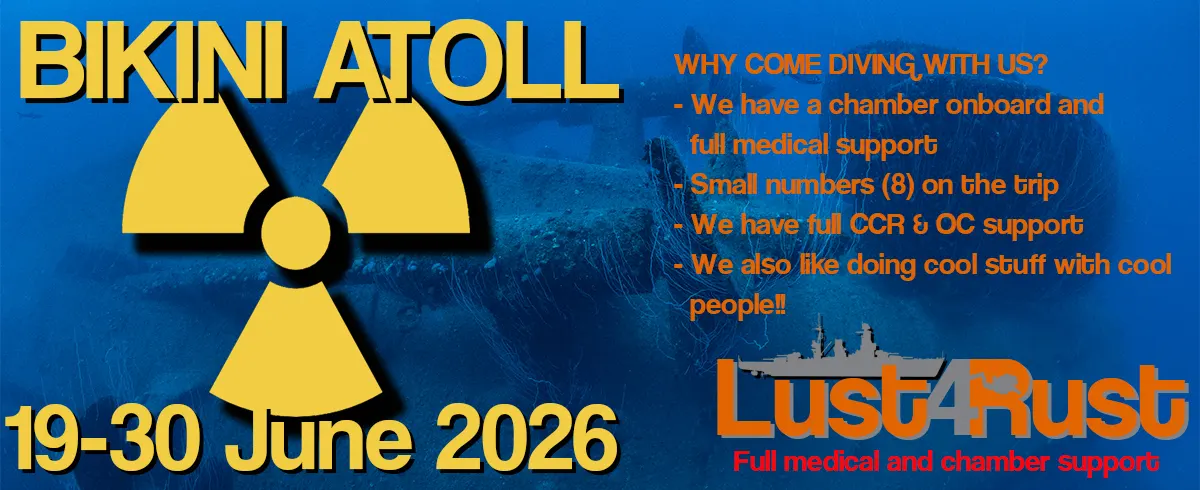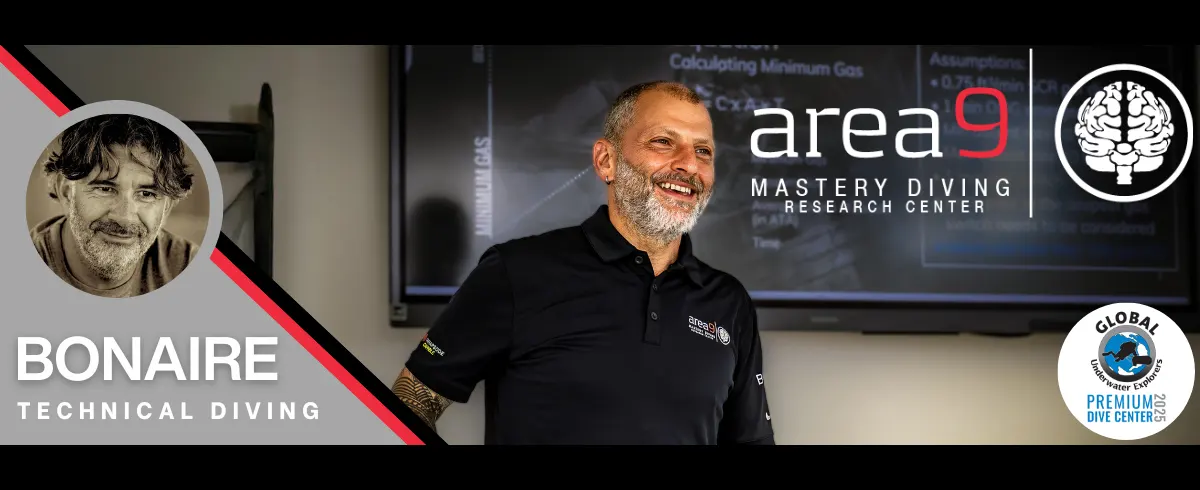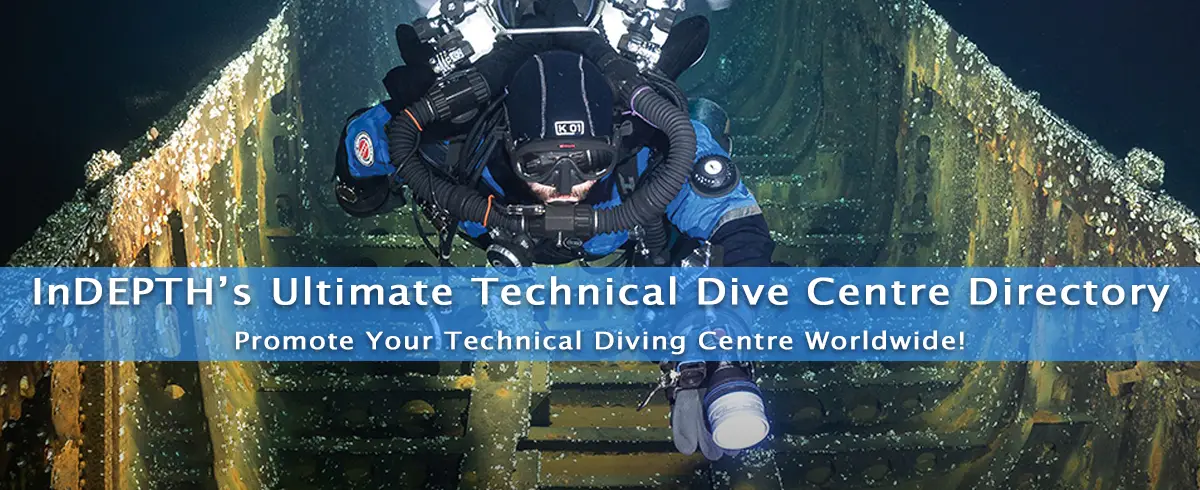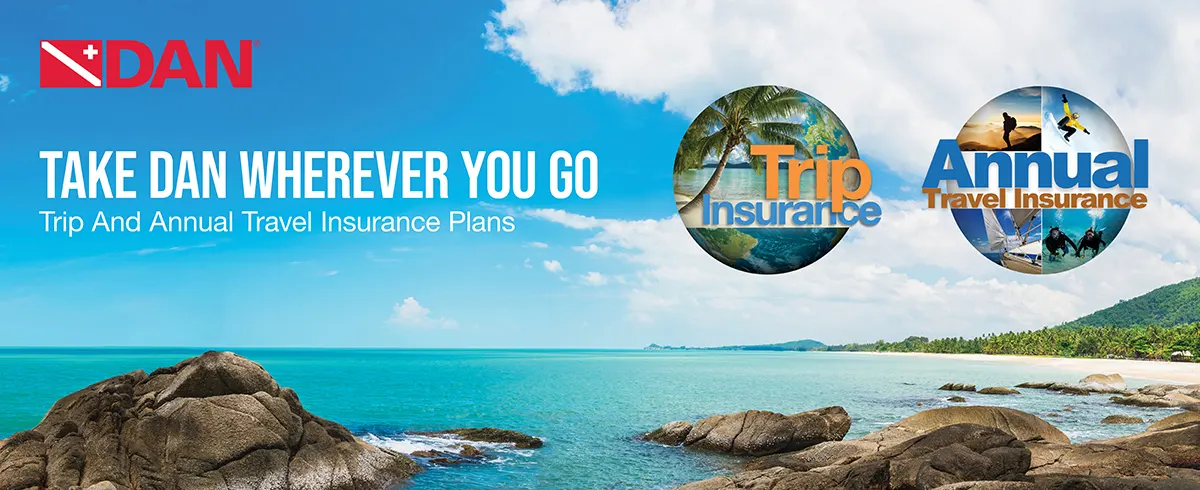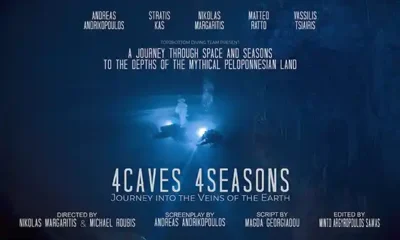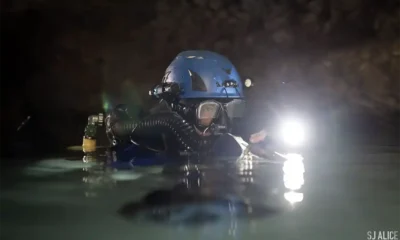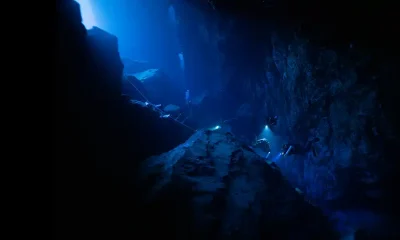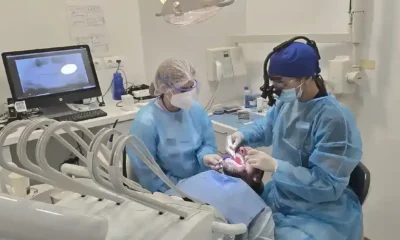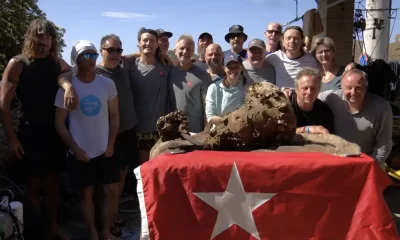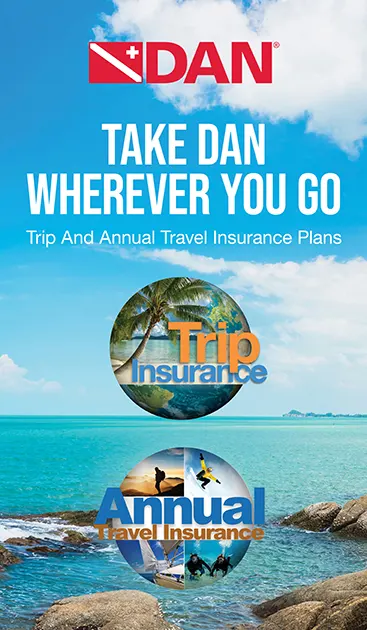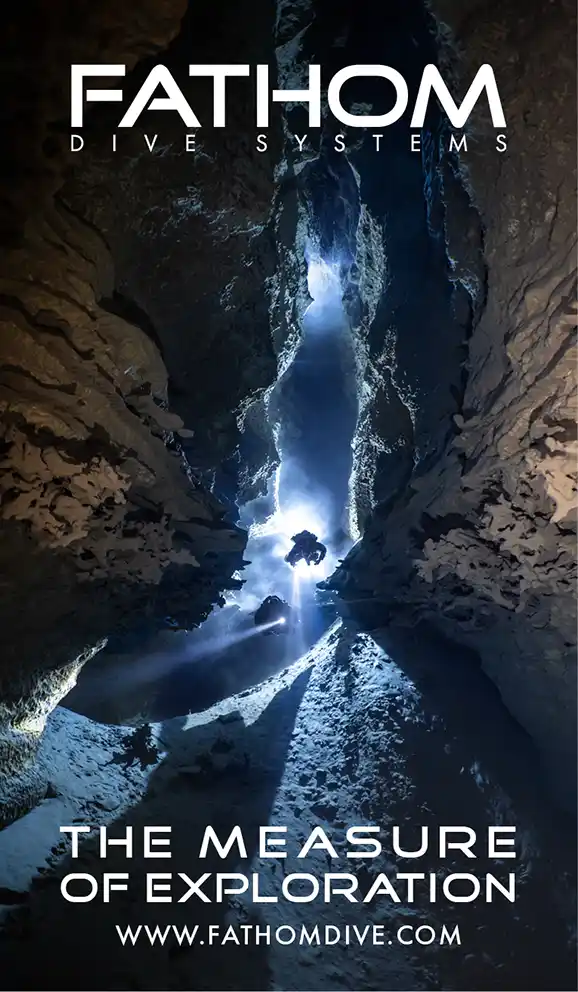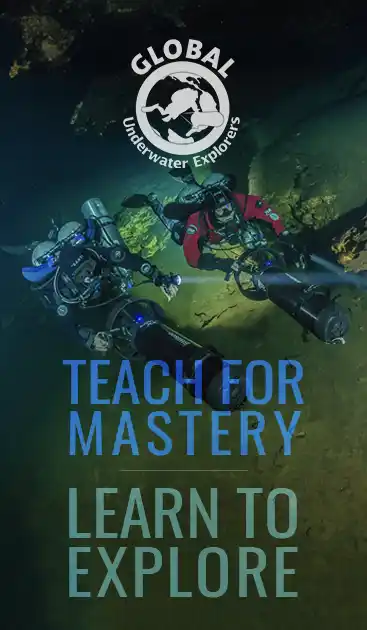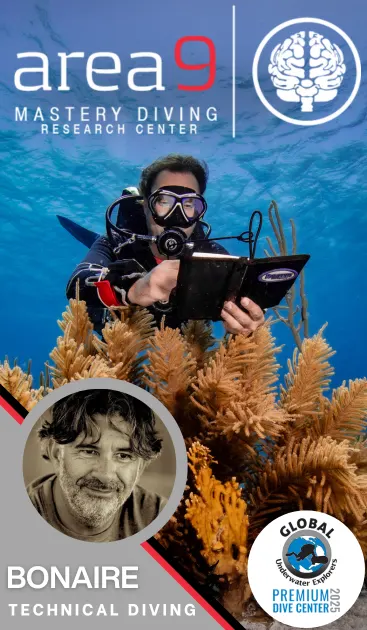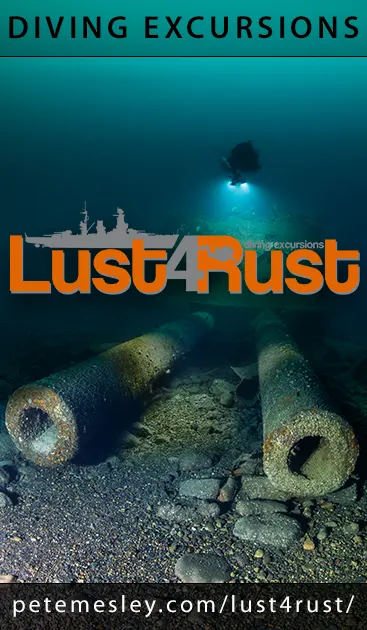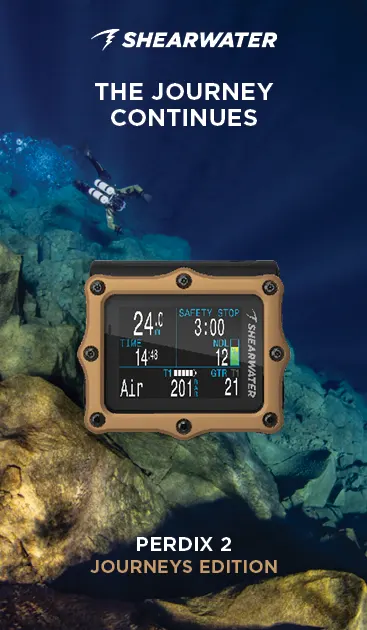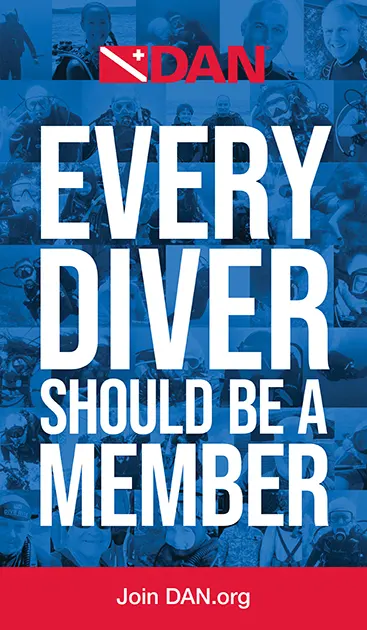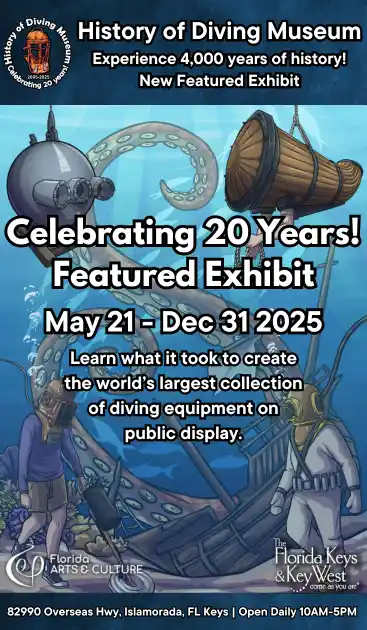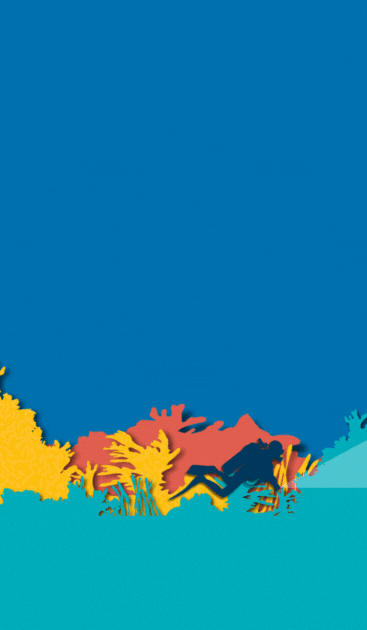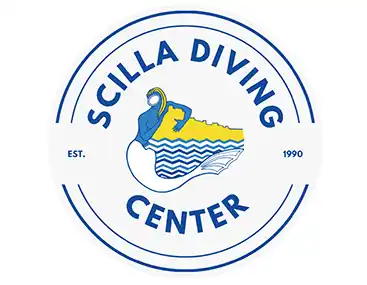Community
THE TALKS: Cave Diving Nomads
Round Table Rhetoric with Stratis Kas.

Welcome to THE TALKS—an immersive journey into the heart of tech diving, bringing together inspiring figures in the community to share their insights, engage in spirited debates, and challenge conventional wisdom. So, join us as we embark on a journey of discovery, courage, and camaraderie.
Hosted by renowned cave instructor and author, Stratis Kas, each session explores a diverse array of topics from fresh, new angles. Just as he once brought these stories to you with his best-seller “Close Calls,” he now gathers these voices -plus many more- once more to face questions that will test their limits.
In the first episode, “Cave Diving Nomads: True lifestyle, or Just a Way to Pay for Diving?”, we explore the lifestyles of divers examining whether their pursuit is a profession or merely a means to fund their passion.—SK
Chapter #1: Cave Diving Nomads
With: Ruben Castillejo Argote (Tulum, Mexico), Brian Starnes (Sardinia, Italy), and Patrick Stoner (Marianna, Florida, USA)



Not all people (and certainly not all cave divers) are the same. When we imagine a typical cave diver, we often picture someone in their 40s or older. But these three guys break that mold. They are young, adventure-seeking travelers who have taken a unique approach—like surfers traveling the world in search of the perfect wave. These guys have adapted their lives for cave diving—living in vans, moving constantly, and not calling any specific place “home.”
I present to you the cave diving nomads. Brian, Patrick, and Ruben represent a new generation of divers who live on the road, continually seeking new underwater landscapes to explore: much like the early explorers who paved the way.
These modern nomads have traded traditional lifestyles for one of constant movement and adaptation, driven by a relentless passion for exploration and adventure.
Let’s dive in and discover what it means to live and breathe as a cave diving nomad.

Stratis: What defines a “Cave Diving Nomad” in the diving community, and what distinguishes them from other types of diving professionals? Can you share how you began your journey in this unique aspect of your profession?
Brian: What is a cave diving nomad? Well, a cave diving nomad is someone who travels around the world looking for new caves to explore and visit. Divers, in general, are pretty nomadic. The difference is that some of us decide to stay longer. We travel to see cool things, stay there, and start working so we can keep being there. That’s a good description of a cave diving professional nomad. How did I do it? I was a nomad first and a cave diver second. I was already traveling, visiting places, doing things, and then I started cave diving. I thought, “This is really cool, I like this a lot. Maybe I can live in really cool places and keep doing this.” What about you guys?
Ruben: Well, in my case, it was similar. First, you’re a nomad, and then you’re a cave diver. At some point, you put them together. I totally agree that once you visit a cool place—like what happened to me in Mexico—you want to stay, so you need to start working on it. In my case, I’m more of a slow-motion nomad because I’m traveling with two dogs. So I break the year into seasons, the European season and the Mexican season. You can travel and discover new places, and sometimes there are caves in places you’ve been before without knowing they were there.
Patrick: I had a similar setup. I was living with roommates, making ends meet. Then my roommates left, and I couldn’t afford the place by myself. I had wanted to do the van lifestyle for years, so I built my first van. I was already a diver but not a cave diver. I went home to get my instructor certification. Half the time I lived out of my vehicle and the other half at home. Then I decided I wanted to cave dive, so I moved to Florida and haven’t looked back. It’s been almost five years. I work at Cave Adventures and manage the shop now. I work three weeks straight and take a week off to travel. My big vehicle doesn’t get great gas mileage, so unless I’m going somewhere for a while, I leave it at home and drive my normal car or motorcycle. Even though I’m not traveling every day, I travel more than most people. Last year, I went on six decent vacations, including two weeks in Bali and some time in Bonaire.



It’s about the spirit, Patrick. It’s not so much about the days on the road. What you guys do is nice because diving allows you to live. Now, the second question: How do you balance your love for diving and the practical realities of sustaining your lifestyle financially, especially with all the traveling you do?
Ruben: I think capitalism plays a part. We’re all white and from Western countries, so it’s easier for us. For example, I made Euros in Europe and then came to Mexico, where it’s cheaper even though cave diving is expensive. The first years were tough, working in Europe during the summer to save money and then coming to Mexico. You need a visa, a car, gear, and customers, so it’s challenging. For me, working in Europe during the summer and in Mexico during the winter worked. It’s about patience and knowing you won’t have everything in the first year. The nomadic life is a long-term race, not about arriving the fastest but about keeping on.
If you’re doing this, money is not your end goal. You’re probably not going to get rich. Patrick, what do you have to say about this?
Patrick: It’s pretty similar. I’m not traveling from country to country, but as I mentioned earlier, I work three weeks straight and take a week off. It ends up being like having weekends off for a month. I don’t lose any money doing this, and having a full week off allows me to travel, dive, and visit other countries or explore the U.S. Is working three weeks straight at 10 hours a day every day hard and annoying? Yeah, it is. That’s 70 hours a week, but you get a week off. I get a whole week to do things that most people don’t get to do. I work at a dive shop. I learned cave diving through work without having to pay for it. As long as I was working, I got paid for it. I got trained by Edd Sorensen, arguably one of the greatest instructors out there. He’s there for me every day. If I want to do something, he’ll help me do it. Yes, it’s hard work, but once you’re used to it, it’s easy. I just work my time and then take off to do whatever I want. I leave, and when I come back, my job’s still there. Most people don’t have that opportunity with the nine-to-five lifestyle.
Brian: I feel you. I work every single day during the season and then get a few days off a month when the weather gets bad or when people want to take a break from their course. It’s tough. To the question, one of the big keys is understanding that you have a limit to your funds and need to stretch them. I was backpacking for several years, making some money for a couple of months each year, then spending the rest of the time in Central and South America. I lived on the beach, surfing, camping a lot, cooking on a fire. It was great. You don’t eat out much or spend money on unnecessary things. I try not to buy clothes, only dive gear. I take hand-me-downs for clothes, mainly because I like to give things a new and extended life.

That’s wonderful. People should do it more. What are some challenges and risks of being a nomad in your cave diving? How do you deal with not having a permanent base like most cave professionals?
Patrick: Sure, I might be the least qualified in some ways, but I have different qualifications that come into play. I work a ton, so when I dive during the week, it’s usually after hours. I’ve finished work, taken a nap, eaten some food, and then hopped in the water at two in the morning for a three or four-hour dive before going to work. If something happens during those dives, no one knows I’m in the water. Even if they did, what could they do at two, three, or four in the morning? They wouldn’t notice I’m missing until eight when work starts, and even then, they might give it until nine before realizing something’s wrong. Personally, I’m used to it. I never call and tell people my plans because it worries them. I’d rather they get a call if something happens, rather than worry constantly. When I travel, it’s mostly by myself. I went to Bali last year with just a plane ticket and a rough idea of where I was going. I arrived at 11 PM, got picked up by a stranger in a car, in a language I don’t know, holding a sign with my name. I thought, “Well, that’s me,” and started an adventure. To answer the question, I don’t worry and try not to make others worry about safety. I do my skills and drills. I’ve gone into caves, turned off all my lights, and navigated back 5,000 feet in the dark just to prove I can. My family understands I take risks but also that I take measured risks and do what I can to be as safe as possible. I hope that comforts them. Maybe it’s a little selfish, and I don’t ask because I might not want to know the answer. But I just do the things I want to do.
Brian: I agree. Medical issues can be tricky when you’re moving around. I had a serious skin problem that required medical attention, but finding a good doctor was hard. It wasn’t until leaving the island that I discovered it was a product I was using from the area that reacted aggressively with my skin. Normal body maintenance can be difficult.
Ruben: Before, Brian was talking about backpackers, and it’s interesting to consider the concept of the backpack in relation to nomadic diving. As a nomadic diver, you carry your gear like a backpacker, so even in different places, you still have your own equipment and settings, which can ensure your security. The training you have is something you bring with you wherever you go. If your training is solid, you can adapt to new places. However, there’s the challenge of arriving at a location where things are so different that your usual gear and methods might not be sufficient. This is where the local community becomes crucial. Local divers can provide invaluable advice about specific conditions, such as currents or unique entry points. Coordination with the local community and acknowledging that there will always be elements beyond your control, like the availability of doctors in the area, can help you maintain a certain level of security.
Patrick: To touch on the medical aspect you mentioned, let me give a bit more of my background. My first job was as a lifeguard, which I did for years. I also worked as a firefighter and EMT for years. While I don’t know everything, I have a solid grasp of basic medical first aid. So, I don’t worry too much about medical issues. If something serious happens, I trust that someone around me would have some knowledge or get me to a hospital. Most of the time, I’m in the US, where hospitals, while not always the best, generally know what they’re doing. And we have DAN (Divers Alert Network) for emergencies—they can provide assistance if you call them. For basic issues, as long as I’m conscious and clear-headed, I feel pretty confident in handling things.
Brian: You’ll be okay… Probably.
Brian, do you see this traveling lifestyle as long-term, or do you see it as a temporary phase towards a more permanent situation?
Brian: I’ve always had a strong case of wanderlust, and I imagine I’ll continue moving around. I’ve always wanted to have two main places to go, plus spend part of the year visiting somewhere new. Right now, those places are Sardinia and Ecuador, and I generally get to go somewhere else for a month or so as I plan out the year. Lately, I’ve been thinking a lot about kids. This brings up the question: is the wandering lifestyle suitable for children? I don’t have the answer to that yet.

That’s beyond our scope, but I’m sure if you have kids traveling with you, they’ll be lucky. I wouldn’t mind being one of those kids, but that’s my personal opinion.
Ruben: Just don’t let the social services know it. Haha!
Brian: Keep it hidden. No passports.
Ruben: Well, Brian was mentioning how age can change your perspective. It’s different when you’re 25 or 30 compared to when you venture further along. In my case, children aren’t part of the picture. My family consists of animals. So, I’m free to decide my path. But there are moments when certain fears—if you will—creep in, making me wonder if this lifestyle is sustainable in the long run. However, I believe the solution lies not so much in the outcomes but in our mindset. Everything is dynamic, and change happens rapidly. Even if I wanted to settle down in Mexico for the rest of my life, recent developments in the caves show how unpredictable life can be. People who’ve been here a long time are now saying there may only be a few years left before a significant shift occurs. So, while we can plan, life often has its own agenda. Personally, I try not to stress too much about it. Whenever those worries arise, I remind myself how much I’m enjoying the present moment and trust that things will unfold as they should. Settling down seems to be the norm. But looking back at human history, there have been nomadic ethnic groups that thrived for centuries, like those in the Sahara. There’s a certain wisdom in the spirit of perpetual movement. So, even if I ever have a house without wheels, my nomadic spirit will always be alive and well.
Patrick: I couldn’t agree more. I’m aiming to ramp up my international travel, perhaps fitting in about two trips a year would be ideal for me. But my long-term goal is simple: as long as I’m happy and enjoying myself, I’ll keep going. Like Ruben mentioned, even if I eventually settle into a non-mobile home, it’ll be a modest, eco-friendly space that requires minimal upkeep. I envision it as a small, cozy base where I can return after extended periods away, whether it’s for a month or six. At this point, I have absolutely no desire to stop, and I don’t foresee that changing anytime soon.



How does cave diving intersect with issues of cultural sensitivity and respect for local communities and territories? Could you share some personal experiences and challenges you’ve encountered in this regard?
Ruben: In my view, there are numerous ways to approach not just cave diving, but life itself. Personally, I find myself naturally drawn to engaging with the people around me. Diving serves as a catalyst for conversation. Before and after the dive, over a shared meal or a drink, connections are forged and stories are shared. These moments offer a window into the culture of the places we visit. Take Bosnia, for instance. Despite its harsh recent history, it boasts a rich cultural heritage. While exploring the caves there, I had the opportunity to sit down with locals, hear their stories, and gain insights into their backgrounds. This added layer of cultural understanding enhances the diving experience, making it all the more enriching. The same holds true for countless other destinations. Here in Mexico, for example, the caves and cenotes are intricately linked to Mayan culture and mythology. By taking the time to explore local history and culture, we not only deepen our own appreciation but also become allies in preserving these invaluable assets. So, while some may rush from one dive to the next, I always urge divers to pause, explore, and immerse themselves fully in the cultural richness that surrounds them.
Can you share a story about a challenge you’ve faced?
Ruben: For me, the Balkans present a fascinating backdrop. Many people are aware of the conflicts in Yugoslavia, but hearing firsthand accounts while being there is profoundly different. Moreover, in my daily life here in Mexico, I’ve had the opportunity to connect with the landowners of the cenotes. These individuals, often not swimmers, let alone divers, own the land housing these underwater treasures. When I show them images or describe what lies beneath the surface, it strengthens our relationship and their commitment to preserving these sites. These landowners are the custodians of something invaluable. Recognizing and respecting their efforts is crucial.
Patrick: Well said. While I haven’t encountered as much of this due to limited international travel, I’ve faced similar challenges. However, attempts at cave diving in certain areas were thwarted by land ownership issues or government restrictions. In my home state of Florida and across much of the US, access to waterways is typically open to the public. Typically, the problem we have isn’t so much land ownership, it’s group ownerships or what a lot of people call gatekeeping. You’ve got a group of people that have the permits to go dive this because they’re doing research and 90% of the time they’re not doing research. They’re just in there having fun diving and then just gatekeeping it so no one else can dive there. Here in Florida, you also run into the landowner [issue], though, with the waterways in the US for the most part, as long as it’s a navigable waterway, you can access it. If it’s closed off and you have to go through someone’s land to get to it, well, then they own it. But if it’s navigable by water, you don’t own it. But try telling someone, “Hey, I can go to this spot because I can get to it by the river.” They’re going to shoot at you. I’ve heard so many stories of people getting shot at or their trucks beat up or their boats sunk because they were on someone’s land. Well, no, they weren’t. They were on a navigable waterway, but landowners don’t care. “Get off my property,” pretty much.
Brian: Dry caving is prevalent here, with numerous cave clubs exploring vast networks. As a diver, gaining access to these sites requires time and trust-building. Recently, I helped a shepherd install a water pump in a cave on his property. It was a unique opportunity that combined single-rope techniques for vertical, squeezy caving with sidemount techniques for practical underwater assistance. It was gratifying to utilize my skills to benefit others.


What’s your take on some of the current challenges related to diving in general? How have your experiences impacted your ideal visions for the evolution of cave diving?
Patrick: So, what I’ve observed in my area is a significant trend related to rebreathers. With the rise in gas prices, including helium and oxygen, rebreathers are becoming more appealing due to their potential cost savings on gas. However, there’s a misconception that buying a rebreather solely for gas savings is sufficient, which isn’t the case. I’ve noticed a surge in interest from what I’d call “open water divers,” individuals who may lack the specialized training and experience required for cave or technical diving but are drawn to rebreathers nonetheless. Many of them have minimal diving experience but are eager to invest in rebreathers after watching videos. This influx of newcomers has both positive and negative implications. On one hand, it brings in revenue and expands the diving community. However, cave diving, technical diving, and using rebreathers demand a certain mindset and skill set. It’s not a “set it and forget it” scenario; attention to detail is crucial, as mistakes can be life-threatening. This year, we’ve witnessed several tragic incidents involving experienced divers, highlighting the importance of proper training and caution. Moreover, there seems to be a decline in cave diving, at least in my region. Some older divers are retiring or scaling back their activities, while younger divers may quickly grow disillusioned after exploring only a fraction of what cave systems have to offer. They may believe they’ve seen it all after visiting a handful of popular caves, overlooking the vast unexplored passages waiting to be discovered. Overall, the future trajectory of diving remains uncertain. While certain aspects may experience decline, others are rapidly expanding. These next few years will undoubtedly be intriguing as we navigate these changes and strive for a balanced and safe diving community.
Brian: More young people would be the change I want to see.
Ruben: I’m not the best business analyst, but from what I can see, I’m more focused on the present rather than speculating about the future. What I notice is that perhaps we need to shield ourselves a bit from the influence of business. It’s like the story of King Midas; when money gets involved, everything turns to gold, but it’s no longer nourishing. I don’t really distinguish between business and work as much. I believe it’s important for all of us in the professional industry to strive for better working conditions and higher quality standards, as well as advocate for our rights as workers. We often hear the rhetoric that working long hours is necessary to excel, but I come from a background in the kitchen where they used to say the same thing. My grandparents didn’t fight for workers’ rights so that I could be told I have to work endless hours to succeed. Personally, I’m less concerned about industry developments and more focused on how we, as professionals and workers, can establish minimum standards that are sometimes overlooked. For example, I’d like to see employers considering hiring more staff instead of overworking a small team. In Mexico, there’s often this facade of freelancing, where companies avoid hiring employees by outsourcing work to freelancers without providing them with fair compensation or benefits like health insurance, holidays, or job security. It’s a precarious situation that’s all too common in the diving industry and many other professions. We need to address this reality and advocate for better treatment and conditions for workers.

Thank you, Ruben. So, if given the chance to revisit your past career choice as a cave diving nomad, would you reconsider, or would you stick to your original decision?
Brian: Stick to my choices, baby. All day, all the way. That’s my final answer.
Ruben: Well, maybe I’m a bit persistent, but you know me already. I’m from the Basque country, where we’re taught to have strong political convictions. So, for me, my political views are important. I consider myself an anarchist. Work isn’t at the forefront of my life. I love cave diving, cooking, arts, and many other things. I do some of these things to earn a living, but work isn’t the main focus of my life. I prioritize activism, although finding a clear path for that within the diving industry has been challenging. Nevertheless, I’m happy to work as a cave diver because it allows me to share my knowledge with others, whether I’m being paid for it or not.
Patrick: The only thing I would probably change is starting the nomadic lifestyle earlier in life. I had all the opportunity, knowledge, and abilities to do so, but I didn’t start until I was 26. Starting earlier would have put me in a better position than I am now. However, there’s a contradiction to that because I’m not sure if I was ready at 18 or 20. I have more maturity and experience now, which helps me navigate challenges. At a younger age, I was more impulsive and less cautious. So, while starting earlier would have been beneficial, I’m not sure if I would have been prepared for it mentally.



Now, these questions are a bit more personal. Can you quickly share with us your best and worst experiences on the job?
Ruben: Should I start with the worst one? It’s not a single incident but rather a recurring situation. Here in Mexico, especially in this tourist-centric area, there’s often a lack of respect shown by wealthier tourists towards local workers. It highlights the elitism prevalent in this industry. However, amidst these challenges, there are moments of connection that I cherish. Building strong relationships with individuals, especially in challenging situations, creates lasting bonds. While PADI’s notion of lifelong friendships may have been marketing, it rings true in my experiences. These genuine connections are the best part of my job.
Patrick: Let’s begin with the worst. I’ve experienced a couple of tough situations in this regard. Unfortunately, death is something we’ve all had to confront in this sport. There have been numerous fatalities, including those of close friends. Not long ago, I found myself assisting in the recovery of the body of a dear friend. It’s a heart-wrenching experience, especially when it happens in familiar surroundings or places we frequent. Dealing with loss in such proximity is incredibly difficult. On the brighter side, one of the best aspects revolves around the camaraderie and shared experiences. While I don’t formally guide or instruct for pay, I often find myself leading friends or fellow enthusiasts on dives. Taking someone to a new spot or challenging environment and witnessing their excitement and enjoyment is incredibly rewarding. Suddenly, there’s laughter and giggles, and everything feels right in the world. Emerging from the dive, we share a beer, reflecting on the experience. Some express awe, others find it stressful, but having each other’s back is reassuring. This camaraderie is priceless. While I cherish solo dives, I’ve come to enjoy diving with others just as much. Witnessing their joy adds to the experience. Still, I’ll explore alone when I need to, but now, I’m more relaxed about inviting others along. The post-dive celebrations, with their parties, beers, hugs, and even tears, are simply incredible.
Brian: You make a solid point. From a professional standpoint, there’s something immensely satisfying about seeing the impact you’ve made on someone. Whether it’s witnessing their joy or helping them master a challenging skill—like backfinning, for instance—it’s rewarding. I genuinely appreciate those moments. On the flip side, I dislike disappointing people. Recently, I had to part ways with a student who wasn’t quite ready; their skills didn’t measure up. It didn’t sit well with me, even though I knew it was the right decision. Despite the circumstances, there’s still a lingering sense of guilt, as if I could have done more, even though it wasn’t feasible. It’s a complex situation, but that’s how it goes sometimes.

It happens. And at least you are aware of that. And I’m sure in time, if not immediately, that person will be aware, too. So you did what you could. All right. Maybe you have already answered this, but what was the most dangerous moment you’ve encountered?
Patrick: Oh, sure. I had some friends coming into town. So I needed to test my dry suit because dry suits are never dry. And I wanted to make sure things were good. And I just turned around in the cave, barely went anywhere. Like a half hour in, I was getting ready just to turn around and go home. And I was like, “You know what? I have one more spot I want to check.” I want to take these guys to somewhere where they’ve never been. So I went off in this little no name, no mark jump. And I didn’t lay any line, didn’t mark anything where I was going. Didn’t leave a single clue. You wouldn’t know I was there.
I get in this little spot. And I noticed at the end of this little spot, there was a hole to a double bottle off restriction. No one’s ever been through it. And I’m just looking and then all of a sudden I see there’s another hole in the floor about 30 some feet away. That cave could go somewhere. So of course, take my bottles off, shove it through the hole, get through. I swim the 30-some feet to the other hole in the floor. I swim down that hole. And I’m looking around and I’m like, “Oh, this is cool cave.” Mind you, this is, you know, about a meter around, five foot at its max. And I’m looking and this is pretty cool in a low flow spot. And then it dawned on me, “Oh, you know what, I should lay a line.”
I turned around and—no lie—could not see my exit. And I’m like, “Okay, you know, we trained for this. No big deal. Let me just pull out a spool, tie it to a rock, and find my way out. So I start looking, looking, looking, can’t find anything, can’t find anything. And then I end up in this little hole. And I didn’t wedge myself to get in there, but I was wedging myself to get out. And this isn’t the right exit. So of course, in that scenario, all viz was gone: zero, nothing, can’t see anything. I got tangled in my line, I had to back out of this little hole, cut my line that I started.
And now I have zero viz, I turn around and I can make a little faint something. And I knew where the end of this spot was. I went to the end of this spot, because I wanted a starting point, I wanted to tie off there and know if I got turned around and hit that wall, I was going the wrong way. That was my thought process. So I pinned myself to the ceiling; I’m on the rebreather. My mind is racing, I’m gonna die in this spot, and no one’s gonna find me. That’s what annoyed me: not the dying, but knowing no one’s gonna find me. I didn’t want anybody else to die trying to find me because I didn’t lay any line.

My brain finally calmed down. Edd’s training kicked in and reminded me that panic doesn’t help you. I reevaluated my situation. I was 20 to 30 feet deep. I had two full LP 85s. So 120 cubic feet, or 110 cubic feet in each tank. I had a full scrubber at 13 hours. “I got 13 hours. What am I worried about?” I pinned myself on the ceiling, shut my lights off, and tried to take a nap. I sat there for I don’t know how long—felt like forever. I was like, “All right, I feel fine. I got 13 hours. Let me see what’s going on around me.” I turned my light on and I could see a little better. “This is working.” So I shut it off again. Waited another little however long. Turned it back on. This is getting better.
So my idea is functioning. I finally get to a point where I can make out my hand in front of my face. I retied another line. I started going. I found the spot I got screwed up in. I went up, poked my head out and took crystal clear water. Saw my double bottle off restriction. Boom. Started heading out. Finally I looked at my computer. I had no deco. I was at 20, 30 feet. I was two hours into what was going to be a half hour dive. I’m coming up, out to the exit. And, you know, everyone, you should stop for your safety stop. I didn’t stop. I went straight to the surface, got out of the water, took my gear off, went to my bus, sat in my bus for a few moments, pulled my phone out, called Edd instantly, and said, “Hey, you almost had a body to find.” I explained the scenario, and he goes, “You had your one.” And from then on out, I’ve had my one.
Do I still explore? Do I explore without a line? Do I go in some little crappy little spot without a line anymore? No. Learned my lesson, took my one, and now I’ve stepped back but learned, and now my exploring is done as safely as I can possibly do it.
Brian: I had a rather interesting experience a couple of months ago—I ran out of gas for the first time ever. It was quite an adventure, actually. My girlfriend and I were invited by this lovely Mayan lady named Gloria to explore a cenote that no one had ever been to. We drove out deep into the middle of nowhere. It was one of those tiny towns where no one had seen many white folks before, and we definitely stood out. People were curious, but hesitant to talk to us until Gloria found us. Once she did, we were all set.
We ventured further into the jungle, expecting just an hour’s walk to reach the cenote from where we parked. It turned into a four-hour trek through an unmarked jungle trail. Gloria’s husband and his brother were with us, marking the trail. Unfortunately, there were also some confusing trails left by loggers, leading us astray. We even lost one of our group members for a while. After a long journey, we finally arrived at this magnificent cenote surrounded by recent ruins. The history and beauty of the place were simply breathtaking.
Excited to dive in, my girlfriend and I geared up. We only had enough neoprene to float one 2 liter tank each. We chose to bring a very limited kit, due to the approach. The cenote descended to around 36, 37 meters through a dense hydrogen sulfide cloud, which was a sight to behold. As I checked my pressure gauge, I realized it was time to ascend. However, two-liter tanks don’t last long at that depth. I ran out of gas at about 22 meters with 30 bar showing on my gauge. It was a bit unexpected, but my girlfriend and I managed to buddy-breathe our way back to the surface.
Reflecting on the experience, I found myself amused by my calmness and awareness throughout the ordeal. There was no panic, just a realization that I had made a mistake. My girlfriend, although clearly thinking rude things, helped me out, and we made it back safely to the surface. We went down again with the second tank, and although I ran out of gas again, this time with 20 bar left on the gauge, we managed to resurface smoothly. All in all, quite the adventure!

It’s becoming a habit, then?
Brian: Nope, that’s my two.
Ruben: There was this one situation that really stuck with me. Normally, I’m fine when I’m on my own, especially considering my slim build. What might not be a tight squeeze for me could be challenging for others. But back then, I was leading a group, and I decided to go first through what seemed like a small passage. As I made my way through, I realized it wasn’t as spacious as I thought. When I turned around, I saw one of the divers struggling, entangled with the line and making quite a mess. He was much bigger than me, and I couldn’t help but worry if he wouldn’t be able to move, it would complicate my own exit. It was a moment of realization. Now, I prefer to let others go first unless I’m certain of their capabilities. It’s a way to help them gain experience and build confidence. But, I’ll admit, I’m a bit of a control freak. When I’m in control, I’m fine, but relying on others can feel like a gamble. It’s different when you’re diving with experienced friends, but in a professional setting, trusting someone else can be unsettling.
As we wrap up, I want to say a big thank you to everyone who took part in this talk. Your stories and thoughts about diving have been really interesting and helpful. I’m happy to share that “THE TALKS” will be a regular feature in InDEPTH Magazine. Thanks again to everyone!

Brian Starnes is a Full Cave instructor working at ProTec Sardinia. He dives the TS sidemount system, the T-Reb MCCR, and Seacraft Scooters. He prefers wetsuit diving, though is currently diving dry due to the water temp. His most visited cave is Bel Torrente. His favorite cave at the moment is Maseduoe, a newish find in the gulf of Orosei. Brian was born in Atlanta, Georgia, in the good ol’ US of A.
His mother traveled four times a month for work and took him on many of those trips. His first encounter with the underwater world was in fact in a cenote, in Mexico, on one of those trips when he was three. As soon as he graduated (one should always have a diploma in case… you know… whatever the old folks say), Brian left America and spent several years backpacking around the world, surfing, diving, driving motorcycles, and generally enjoying the scenery. He eventually semi settled in two places: Sardinia for the cave diving season and Ecuador for the surfing season/his tree farm, which is transitioning to cacao. He saves a couple months a year to go to different destinations to taste the flavors and see the sights. Links:

Patrick Stoner, 34, has resided in Marianna, Florida, for the past five years. Originally hailing from northern Illinois, he has harbored a lifelong passion for water and travel. His first vehicle, a 1998 Ford Taurus station wagon, was chosen for its capacity to accommodate both his gear and friends for adventures. Over the years, Patrick has explored numerous countries and states across the United States, even residing in several different states.
His diving journey commenced around the age of 25 or 26, coinciding with his first van build at 28. Embracing the nomadic lifestyle, Patrick has been living in his van full-time for almost five years, finding that it suits his needs perfectly. During this time, he has immersed himself in various diving disciplines, including cave diving, DPV diving, wreck diving, and CCR diving. Presently, Patrick holds the role of managing Cave Adventurers Dive Shop in Marianna, Florida, under the guidance of the renowned diver and instructor, Edd Sorenson.
Links: easternrider08@aim.com, www.facebook.com/patrick.stoner.10

Ruben Castillejo Argote was born in the Basque Country and has been living on the move with his little dogs since obtaining his driver’s license. He is a chef, artist, activist, and diver. As the founder of Cocina de Guerrilla Sukaldea, a collective that hybridizes food and art to promote Food Sovereignty, he has executed various art proposals worldwide over the past thirteen years.
Ruben discovered cave diving in Mexico while working on one of his art projects. He fell in love with the stunning underwater landscapes of the Yucatan Peninsula. Since then, he has completed several diving training programs to become a professional cave guide. He continuously searches for new cenotes and passages to share with visitors to the region.
During the summer, Ruben lives in a self-built home truck, traveling and working on social engagement art projects while diving in European countries. In the winters, he works as a freelance cave guide in Tulum and Playa del Carmen (Quintana Roo, Mexico). In a continuous learning process, he loves to make diving a starting point for long-lasting friendships under the premise of “caring and sharing.” Currently, he is focused on developing his diving operation, GUERRILLA CAVE DIVING, offering guiding services for passionate divers who want to discover the magical world of flooded caves. Links: IG @guerrilla.cave.diving

Stratis Kas, a Greek-Italian professional diving instructor, photographer, film director, and author, has spent over a decade as an esteemed Advanced Cave instructor, leading expeditions to extreme locations worldwide.
His impressive diving achievements have solidified his expertise in the field. In 2020, Kas published the influential book “Close Calls,” followed by his highly acclaimed second book, “CAVE DIVING: Everything You Always Wanted to Know,” released in 2023. Accessible on stratiskas.com, this comprehensive guide has become a go-to resource for cave diving enthusiasts. Kas’s directorial ventures include the documentary “Amphitrite” (2017), shortlisted for the “Short to the Point” Film Festival, and “Infinite Liquid” (2019), which explores Greece’s uncharted cave diving destinations and was selected for presentation at Tekdive USA. Kas’s expertise has led to invitations as a speaker at prestigious conferences, including Eurotek UK, Tekdive Europe and USA, Tec Expo, and Euditek. For more information about his work and publications, visit stratiskas.com.

